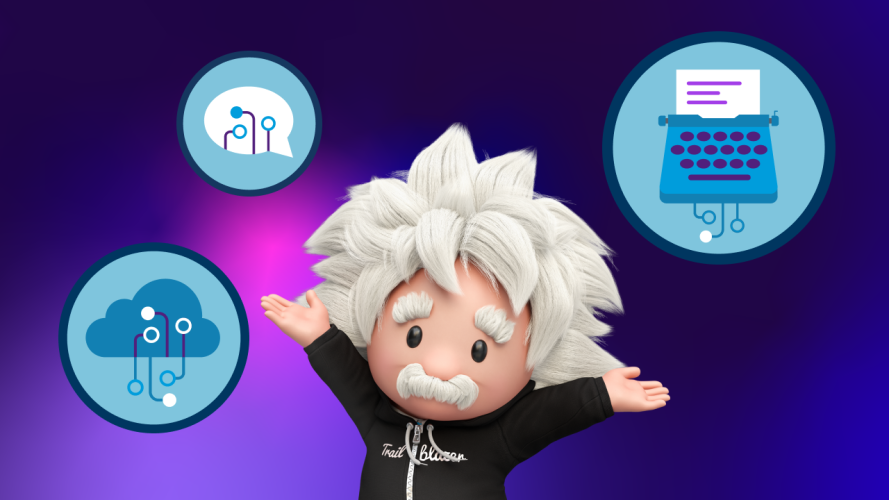3 Ways Generative AI Will Help Marketers Connect With Customers
3 min read


A bad experience is one of the top reasons a customer will leave a brand, and younger generations are increasingly likely to abandon ship for this very reason. That’s why fostering a customer-obsessed culture can improve an organization’s health and longevity.
While you may have heard of customer obsession and think your company is hitting the mark, how can you be sure?
“The number one priority at companies with customer-obsessed cultures is providing service and support that makes their customers successful,” said Thomas Miller, senior director of alliances for Trifecta Technologies. “The best leaders prioritize values that center around their customers, and they consistently communicate and act from that customer-obsessed foundation, empowering all employees to do the same.”
Here we’ll share seven ways to foster your own customer-obsessed culture, including strong customer-obsession examples from companies that do it well.
Discover how Sales Cloud uses data and AI to help you manage your pipeline, build relationships, and close deals fast.



A customer-obsessed culture means that every person in your organization has a customer-first mindset. No matter their role, they see how the work they do connects to serving your customers, delivering meaningful value, and helping them succeed.
However, building customer obsession into your organizational culture requires more than a token training session. It has to be consistently reinforced, going beyond buyer personas and traditional “contact us” customer care.
When you’re customer-obsessed, you build your products, pricing structure, payment options — your entire organization — around your customer. You tear down silos that hamper your customer experience (CX), bringing together customer data and omnichannel support into one platform to make customer interactions seamless. When you succeed, customer obsession turns your customers into fans who believe in your business, remain loyal to it, and advocate for it.
Companies with customer-obsessed cultures tend to maintain a roster of happy, long-term clients, Miller noted. In fact, our recent State of the Connected Consumer report found that 88% of customers say good customer service makes them more likely to purchase again. Why? Great customer experiences, rooted in thoughtful problem-solving and value-first engagement. That work lowers costs; it’s long been known that long-term, loyal customers cost less to retain than new ones cost to find.
Providing the best possible customer experience requires a holistic understanding of your customers, commitment at every level of your organization, and employee rewards and training that reinforce the value of customer obsession. Here’s an effective approach to nurture customer obsession at every level of your organization.
Customer obsession starts with understanding your customers’ pain points and their goals. Build detailed customer personas that go beyond demographics to include challenges, interests, and objectives. From there you can automate account-based research within Sales Cloud, using built-in AI that pulls in relevant data from the web. You can also ask your sales support people to research industry trends that will help your sales team understand the challenges their customers face.
Don’t stop there, though — communicate directly with potential and current customers. Ask for feedback and have prospects and customers take pulse surveys to uncover what’s most important to them. What do they need? What do they want? How can you help them? Train your sales professionals to think of themselves as problem-solvers. Ask them to consider how they can help your customers achieve great outcomes, even if their efforts won’t result in an immediate sale. Putting your customers’ best interests first demonstrates your commitment to their success and helps build a long-term relationship.
Also, learn each customer’s preferred form of communication and meet them where they are. That can be as simple as asking, but looking at a customer’s data profile can yield hints too, especially communication trends.
Example: Williams-Sonoma, Inc. houses nine total brands, each with its own audience. Because those audiences are so diverse, they have done extensive research on each one and compiled a holistic view of every customer. They then segment audiences so they can deliver timely, relevant messages. In fact, the company sends millions of personalized emails to its global customer base every day.
To make an organization-wide commitment to customer obsession, Miller suggested creating core operational processes to support it. Those should inform your hiring decisions, rewards, and strategic plans.
Here are a few ways to demonstrate an active, organization-wide commitment to customer obsession include:
A relatively easy way to automate these tasks: “Set up automated processes within your CRM that notify the right teams each time a customer contacts you and that confirm for customers when they can expect a response,” Miller said. “It’s also now possible to use AI flows that quickly solve certain issues without requiring manual intervention.”
Example: Hilton puts everything a customer wants and needs in the palm of their hand. With the Hilton Honors app, guests can book and select their room, check in and out, unlock their door, order meals, and connect with support — all from their phone.

3 min read

6 min read
Apply your commitment to customer obsession to every conversation internally and externally. Change your language from “me,” “I,” and “you” to “us” and “we.” At a high level, sales and marketing leaders should establish customer-focused language together and do it as often as every quarter, according to Miller.
“When you face challenges, always start from a place of collaboration over accusation,” Miller said. “Doing this internally will carry through in how you speak with customers externally.”
Once you’re aligned on the language, integrate it directly into your CRM with templated email and messaging options that can be routed to specific audiences.
Finally, coach your teams on how to use any prepared materials and how to speak from a place of teamwork. Sales teams can use that language to write emails, plan proposals, and talk with customers. Help develop good habits throughout your ranks by preparing talking points with teamwork-focused language, making sure to refer to your customers in inclusive ways when leading internal meetings. These small tweaks can have a major impact on how customers perceive you during an interaction.
Also, practice this teamwork language in routine conversations with co-workers or during meetings with partners and stakeholders. It will help solidify the “teamwork” mindset.
Example: Slack was founded on the idea of teamwork, and that teamwork isn’t limited to internal collaboration. Leaders at Slack allow their sales teams to interact directly with customers in shared channels, enabling team selling and improving customer service. To support this, they train sellers to talk inclusively when problem-solving with customers. It’s not uncommon to hear things like, “We’ll figure this out together,” or “Let’s see how we can solve this.”
One of the best ways to train behavior is through positive reinforcement. People are apt to keep doing something if they’ve been rewarded for it, and the more they do something, the more it develops into a habit.
To reinforce customer obsession throughout your organization, build processes to reward it. Give reps public shout-outs at meetings when they’re mentioned in a positive review. Establish key performance indicators (KPIs) related to customer-obsession outcomes such as customer retention, upselling and cross-selling rates, and survey scores.
“You can track and reward based on survey feedback by team, person, or project,” Miller said, adding that upselling and cross-selling data show which accounts are satisfied enough to further engage, meaning they’re likely in regular communication with your team and have a shared level of trust.
Track those metrics in your CRM and include them on sales dashboards. This enables you to tie customer-focused KPIs to bonuses and reward top customer obsessors with other perks, such as extra paid time off.
Example: With “Deliver WOW through service” as its number-one value, Zappos put customer obsession at its core. To ensure it maintains this culture, the company prioritizes customer obsession from the start of each employee’s journey, beginning with its hiring process and continuing through bonuses and rewards.
Leaders are in a prime position to drive customer obsession from the top. Highlight customer obsession principles during executive conversations and work them into strategic planning. Remember: If you’re asking your employees to carry out a customer-focused strategy, you should be doing the same with internal processes. On that note, it’s important to create a customer-centric sales process, according to Miller.
“When planning your sales process, make sure your organization is operationally prepared to serve every account, delivering resources when and as they need it,” Miller said.
Beyond foundational processes, make sure your top leaders consistently model customer obsession. Prioritize customer needs in every conversation. Share insights and data on the customer experience as often as possible to show that you’re paying attention and to help others understand how they can make it even better. As you guide your teams to consider customers’ views, seek out and share stories of employees throughout your ranks who’ve shown healthy customer obsession. And reward it when you see it.
Along with asking leaders at all levels to model customer obsession, consider hiring an internal champion to help foster customer obsession and oversee your entire customer experience.
Institutionalizing customer-obsessed behaviors and processes fosters customer obsession, from pre-sales to post-sales. Training can play a huge role in this process. Consider working customer obsession into employee onboarding sessions, quarterly training refreshers, and learning resources. You might even include role-playing scenarios during sales kickoffs.
Explain customer obsession to new hires and share examples of how real-life employees have embodied it. Provide guidelines specifically focused on how to speak with and serve customers.
“You can also train them by role-playing various scenarios, like being faced with a request you don’t know how to handle,” Miller suggested. “Explain what you expect in terms of how they should respond, and share examples of how your employees have responded well to similar situations in the past.”
To that point, ask managers and supervisors to regularly look for and report customer-obsession examples they see in the field. Then you can both award that mindset and use those examples in future training sessions and professional development modules. The more often you can engage employees with the customer-obsessed mindset and reward it, the more ingrained it will become in their day-to-day behaviors.
Example: USAA consistently earns high scores for customer satisfaction, including a Net Promoter Score (NPS) well above the industry average. That’s all thanks to effective customer-focused employee training, including mock boot camps that encourage empathy to better understand customers.
When you identify customer-centric core values and regularly reinforce them with your own behavior and expectations, you lay the foundation for a customer-obsessed culture. From there, help everyone at your organization deliver outstanding customer experience by planning regular training and rewarding great customer care. You’ll be well on your way to becoming a shining example of customer obsession.
See how Sales Cloud speeds up the sales cycle with data and AI, making you more efficient at every step.




Get the latest articles in your inbox.